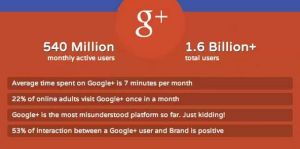I have always been one of social media’s more stalwart proponents, in the firm believe that what has kept humanity going up to the present days has been, well, exactly that, human interaction and engagement; which is really what’s at the heart of effective and engaging communication through this media.
Getting on my soapbox
At the start of my social media crusade, and partly also because I have always operated in B2B, it was a hard and unrewarding battle. Let’s face it, five years ago many B2B senior executives had barely grasped the significance of the web – social media was something they had heard either on TV or from their kids. A few enlightened souls were always around of course, there are communication innovators in B2B too, but these were in a minority. Then slowly, very slowly, things changed. At first timidly too (I remember witnessing the embarrassment of the few innovators present at trade shows when they admitted using social media); then questions were raised about ROI (the classic bean counters ploy to buy time before they are forced to put money into something new). Now these questions are of a different nature and much more significant.
The thoughts below are based on my experience of running B2B social media channels with tens of thousand of followers, so I can say, modestly, that these points come with a certain degree of authority.

Some social media stats
I can’t of course begin to list every single issue, but from my perspective there are two significant topics. The first is content. The second one concerns organisational processes.
It’s all in the content
Content is king across all online communications. If your organisation’s idea of content marketing is to regurgitate online the same information as the one in your printed data sheets you don’t deserve to be in business in the 21st century. If content rules on the web when it comes to social media its significance is even greater. Take tweets, for example. Getting someone’s attention in just under 140 characters is no mean feat (I am saying under 140 as some will be eaten by URLs). In fact a top tweet is a true editorial achievement. Its success is easily measured by the number of retweets and/or conversations. A similar principle (though a little more relaxed, perhaps) applies to all other social media channels too.
Think of your favourite pub

from mediabistro – click to go to page
I have always likened social media channels to catering outlets. Twitter has its own peculiar atmosphere. It’s the fast food of social media channels – you expect to be served in no time, with no fuss and given goods of a consistent quality. Facebook is instead more like your traditional coffee-house, you have more time to engage, you need to be more visual because people will be looking at you for longer and are allowed to be a little, well, silly even. I am not going to list them all here, but I hope you are getting the gist. So the corollary of all this is that you absolutely need to create content which is appropriate for each individual channel, not just of a one-size-fits-all kind.
Tearing down your beloved processes
Now we come to processes. In the – not so old – days you could push something on your website and if you were smart enough your content might generate a few email inquiries. These were easily dealt by your (probably) sluggish internal processes, typical of most B2B operations. But now social media has opened the proverbial Pandora’s box.  Do you have a twitter feed? You need to monitor it almost 24/7 and respond in a timely fashion, certainly no more than in a few hours for a serious request, or even minutes in a crisis. The other consideration is that you can’t possibly just let one person deal with all those channels. If your company is really good at social media you are probably likely to have hundreds (if not thousands) of true (as in not bought) followers. As you crave engagement, your followers will be firing questions at you from all angles. Some of these queries will be customer service ones, others will be of a technical nature, some may be employment related and the list is almost endless. Unless you employ someone with a super brain, pleasant, cheerful and fantastically knowledgeable (which you will probably have to pay a small fortune) you simply can’t do this without the help of a small team and preferably by assigning social media roles across your entire organisation – regardless of its size.
Do you have a twitter feed? You need to monitor it almost 24/7 and respond in a timely fashion, certainly no more than in a few hours for a serious request, or even minutes in a crisis. The other consideration is that you can’t possibly just let one person deal with all those channels. If your company is really good at social media you are probably likely to have hundreds (if not thousands) of true (as in not bought) followers. As you crave engagement, your followers will be firing questions at you from all angles. Some of these queries will be customer service ones, others will be of a technical nature, some may be employment related and the list is almost endless. Unless you employ someone with a super brain, pleasant, cheerful and fantastically knowledgeable (which you will probably have to pay a small fortune) you simply can’t do this without the help of a small team and preferably by assigning social media roles across your entire organisation – regardless of its size.
Here comes the rub for many companies. For decades, executives have jealously guarded knowledge and information within all organisations, creating complex gatekeeping processes. Now, at a stroke, we are asking the same executives to trust a large number of their employees implicitly and to show levels of openness which have been unheard of. By the way the new approach also means making people really work together (breaking down silos and all that, and not just in words). Oh, I nearly forgot, don’t bother giving social media to agencies either, regardless of their promises they can at best help you with initial implementation and other basic stuff, after all, would you outsource your Customer Service?
Well, my dear reader, this is where online marketing in the 21st century is taking us. Few businesses have grasped the cataclysmic nature of social media, its enormous power to engage and create true loyalty (not just its illusionary advertising concept) and therefore achieve huge profitability and growth opportunities. Many companies will fail and fall along the way, but the remaining few will be deserving winners.
Enjoy the ride
So, roll up your sleeves, get on with your social media activities, enjoy the new thinking and embrace the latest BIG business opportunity, but one last word of warning, you have to be true to your values and show a real human angle, if you just pretend you will inevitably be exposed as a fraud and could end up paying a very dear price.
But what about ROI, analytics, integration with other communication channels, is Hootsuite better than Sproutsocial, how about media relations, social media at events, and… I hear you loud and clear, but unfortunately there is simply no time for all of that in such a short piece. In any event, if you don’t get your basic social media strategy right from the start there isn’t much point either in talking about the rest.
If you don’t take my words for it, listen to what McKinsey has to say on the new digital market economy: Few business functions have been as profoundly disrupted by digitization as marketing. The era of expensive campaigns pushing products through mass media has been upended, as consumers, empowered by information, are demanding more and more from the companies they choose to form relationships with. By the way, you can read the rest of that interesting article here.
PS) if you liked this article and would like to know more about social media implementation get in touch.



 mb
mb







